
The Peruvian cuisine of the Peruvian coast, especially on the Pacific coast, stands out for the variations in flavors and techniques, added by immigrants who arrived since colonial times.
The result is an extensive menu of typical dishes, among which we can appreciate and taste flavors that have evolved from the very beginnings of civilization in Peru, to the most contemporary times.
Here we present a list of the most outstanding dishes of the Peruvian coast.
Table of Contents
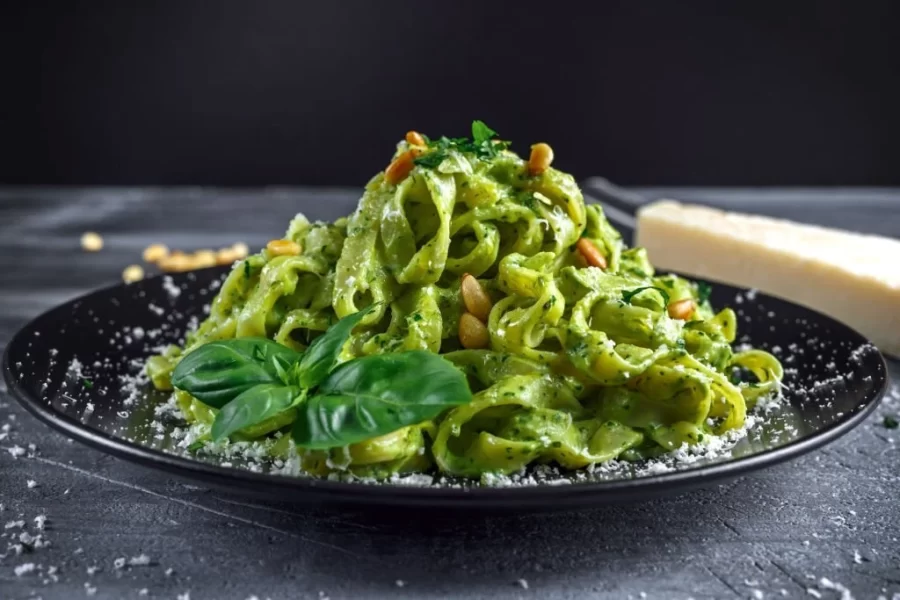
The green pasta has its origins in 1872 years in which the Association of European expatriates was founded, immigrants of Italian origin, then began food business, so born the fusion of Italian dishes based on pasta with Peruvian ingredients, emerging a Peruvian version of pasta with pesto, with variations on the original recipe, how to add milk and is currently accompanied by chicken Milanese or steak in juice.
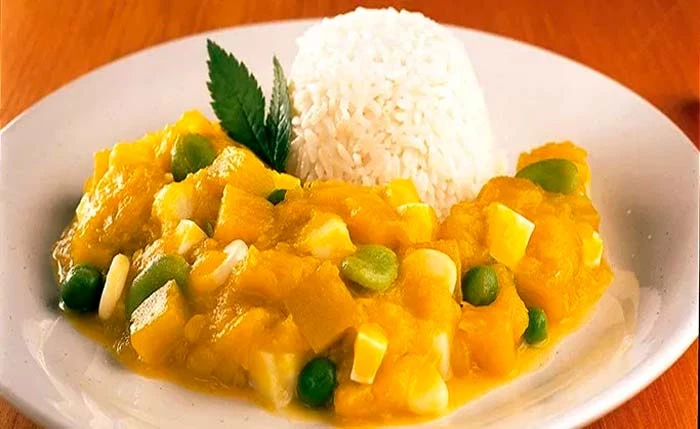
The pumpkin is one of the components of the Peruvian diet since ancient times, since it has been cultivated by pre-Inca cultures such as the Mochicas and the Chimúes. The locro de zapallo is a creamy stew with many years of antiquity, made from the pumpkin, accompanied by sandy potatoes and parboiled white corn, there are those who also accompany the dish with a portion of white rice.
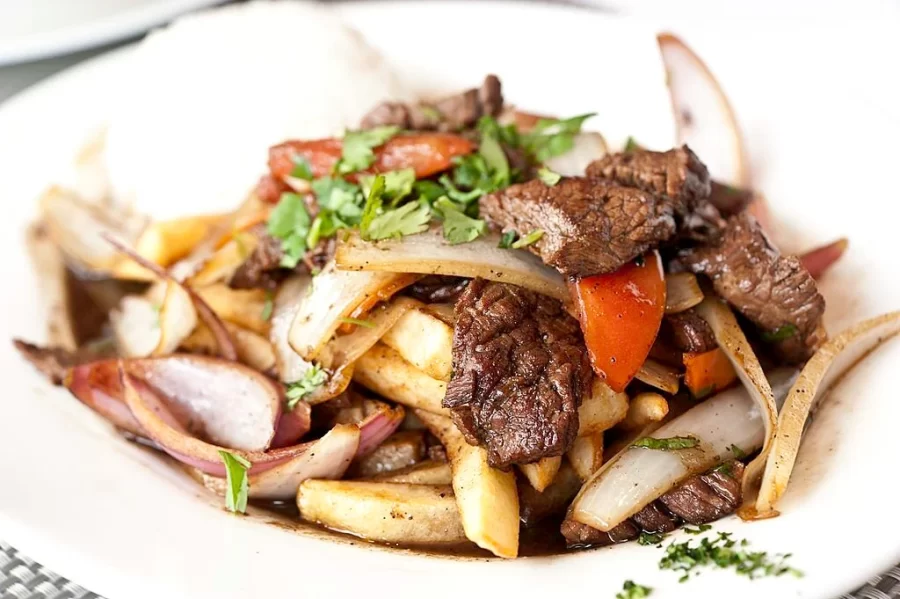
Lomo saltado is a fusion dish whose origin dates back to the 19th century. When the Japanese and Cantonese immigrants introduced their culinary habits to Peruvian cuisine, the use of the "WOK" (Chinese frying pan) was introduced with the technique of sauteing, giving rise to the dish known at the time as "sauteed fillet of beef". A dish consisting of strips of beef marinated in vinegar, salt and garlic, sautéed with thick strips of onion, tomato and peppers, without fully cooking the vegetables, accompanied by chips and a portion of rice.
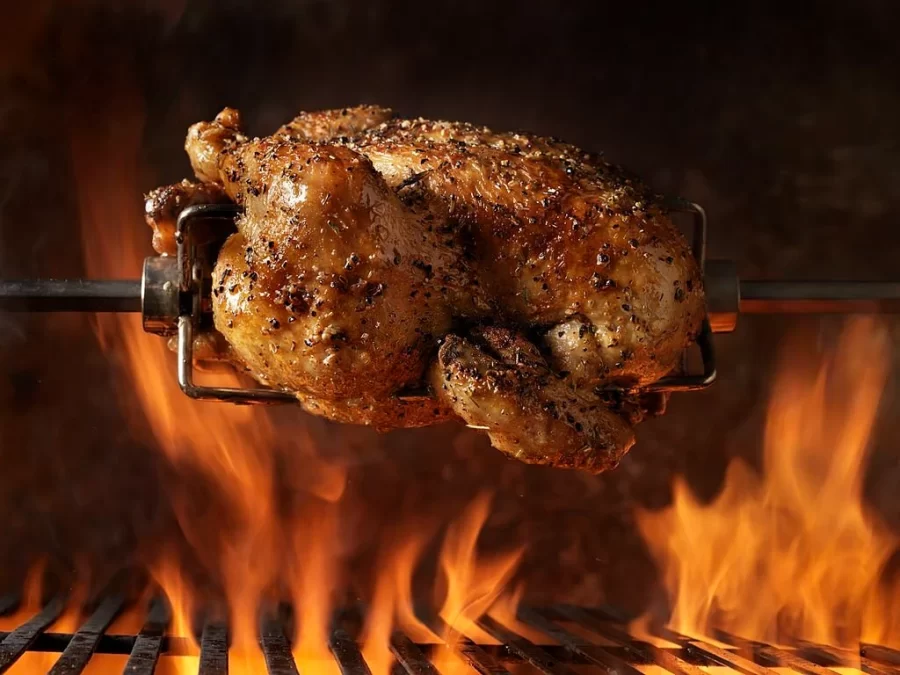
The grilled chicken is a traditional Peruvian dish, with very few more than 70 years, when Roger Schuler and Franz Ulrich designed a new way of cooking chicken, seasoning the meat with local spices such as rosemary, aji panca, achiote, and the wood used for cooking is carob, which also gives an extra touch to the flavor of the final dish, were these two Swiss who created the emblematic "pollo a la brasa" in the first poultry called La Granja Azul.
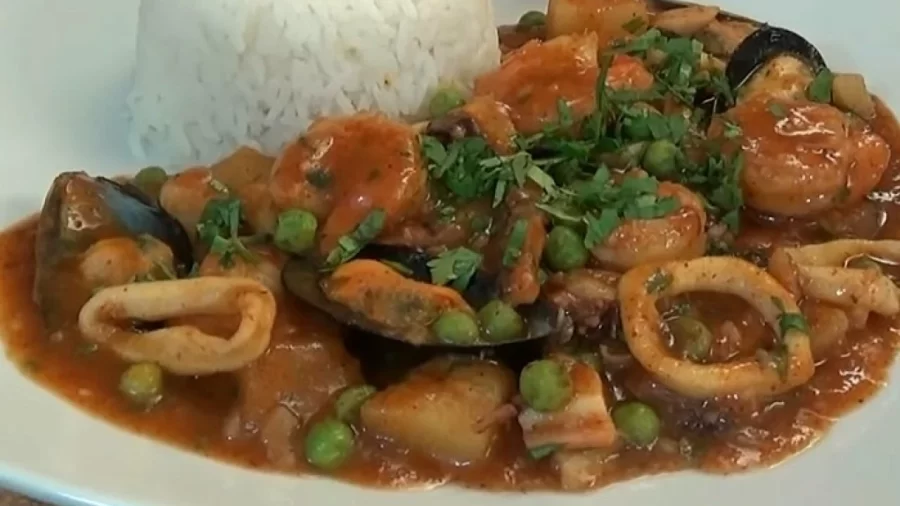
Seafood is undoubtedly a resource that was accessible to the Peruvian people since pre-Columbian times, so it is an inherent ingredient in Peruvian cuisine since the beginning of history itself.
The Picante de Mariscos is a dish made with seafood products such as black shells, clams, shrimp, clams and others, prepared with spicy condiments such as red chili, yellow chili, aji panca, liquefied garlic and peppers.
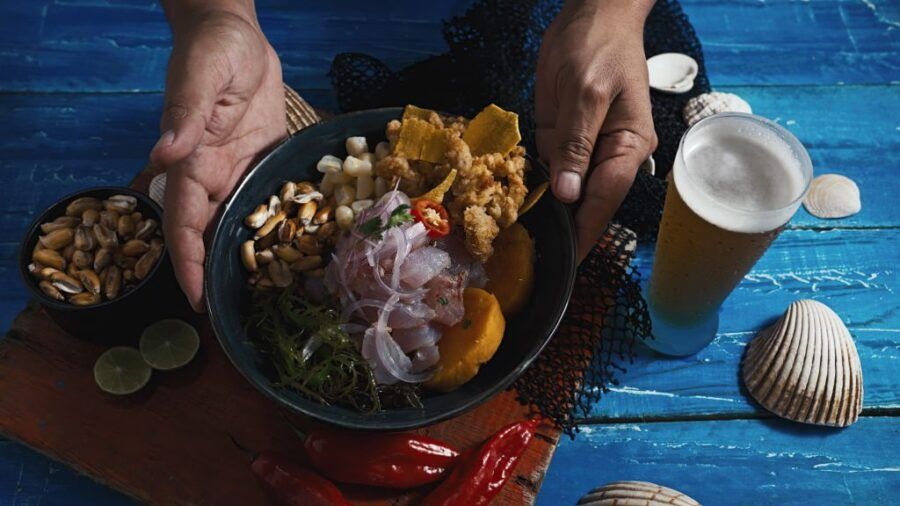
The ceviche is a traditional dish, with origins in the ancient fishing villages, originally the dish was prepared based on pieces of fish marinated in chicha with salt and juice of tumbo, later and with the arrival of the colonizers, new ingredients were added as onion and lemon, changing the final presentation of the ceviche that is currently accepted and declared national heritage.
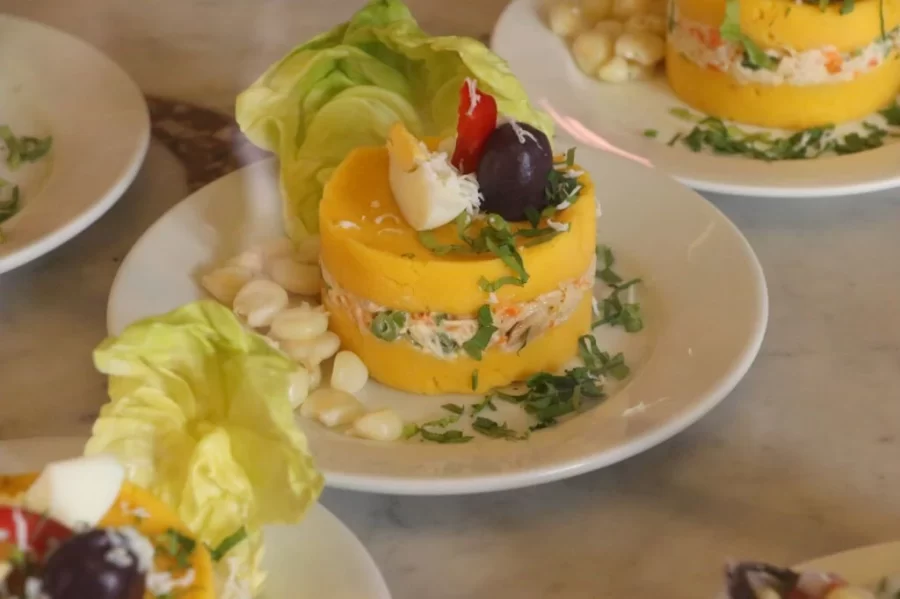
The Limean cause dates back to the year 1820, coinciding with the recognized Liberation Expedition of Peru whose leader was the remarkable General José de San Martín, a moment in which the Peruvian soldiers required a lot of support, a moment in which the women of Lima devised ways to raise funds to support the soldiers, many of whom were their own sons and brothers.
This new dish was put on sale in the squares of Lima with the slogan "por la causa limeña" "for the cause of Lima", referring to the struggle that was taking place at that time.
Currently, the dish is filled with portions of tuna or chicken, in a mayonnaise sauce and condiments, which together with the potato dough with yellow chili make this dish a delight to the palate.
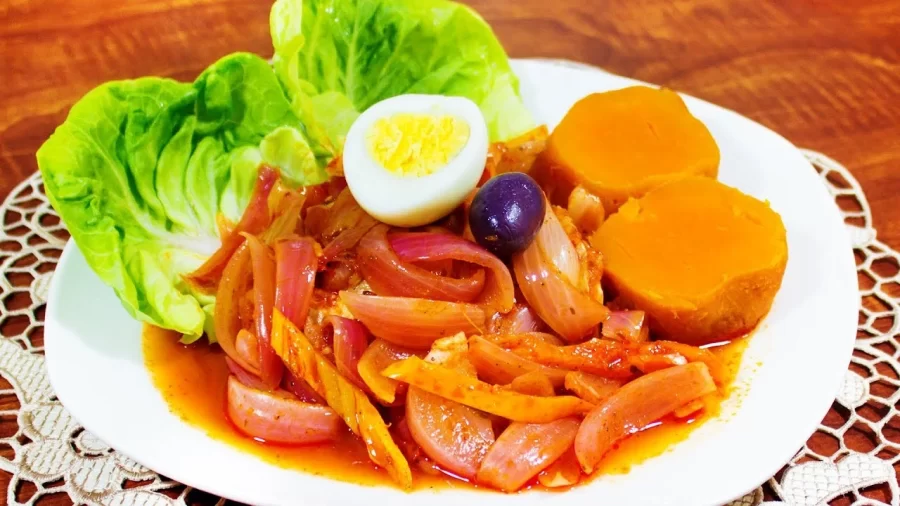
The escabeche we know today, is a culinary adaptation whose origin goes back even to the time of colonization, when foreign traders arrived in our country, in order to make new imports of products while introducing international gastronomic elements, including Arabic and Persian food.
This is how the "sik bag" (whose pronunciation sounds "iskebesh") reaches Peru. The Sikbag consists of preserving food, especially fish, in vinegar, white wine, pepper and Arabian spices, like pickles.
Evidently, the dish went through a wide variation until it became the escabeche we know, adding its own ingredients to accompany it, such as potatoes, sweet potatoes, and the most significant variation is the introduction of chicken instead of fish, although it is prepared in both versions, it is served with rice.
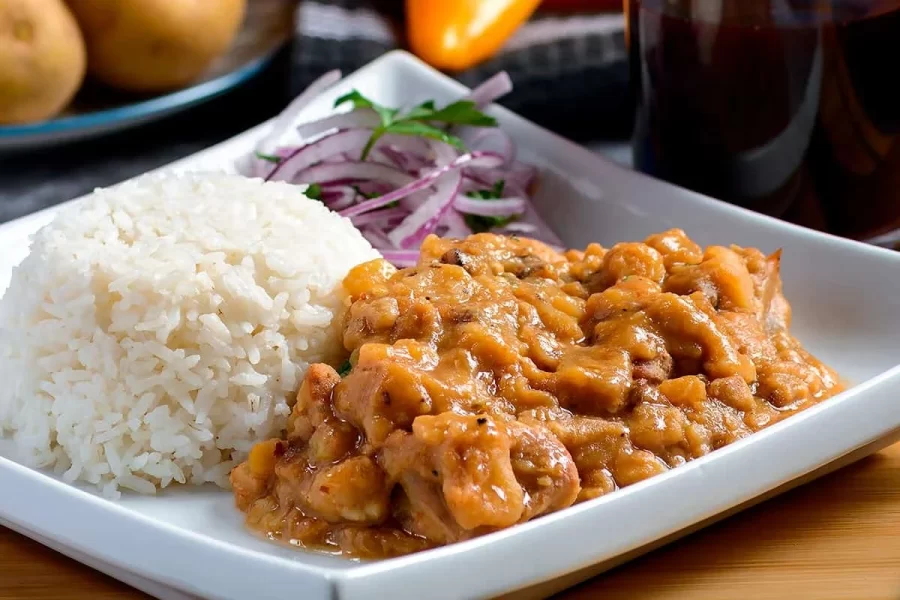
The Carapulcra whose name derives from the Aymara words "khala purka", whose main ingredient is the dried potato, accompanied by alpaca meat or "charqui", with the arrival of the colonizers new ingredients were added such as pork, chicken meat and rice.
The carapulcra has undergone slight variations, while maintaining its usual form of cooking in a clay pot, still using the dehydrated potato, with the European addition of pork.
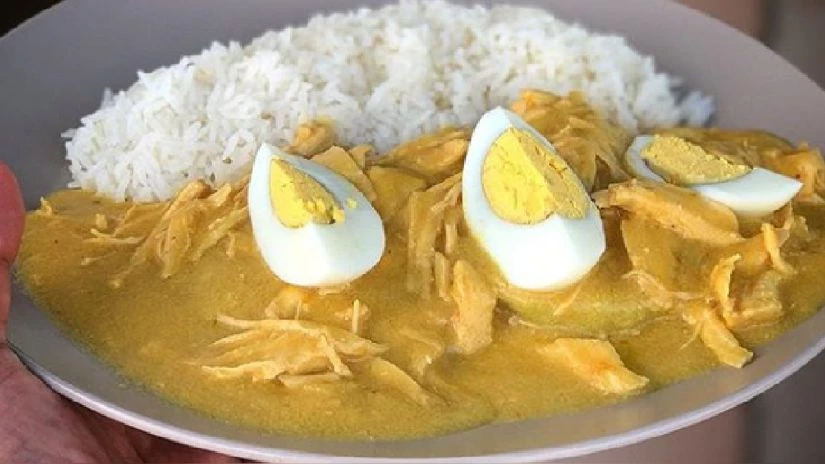
The aji de Gallina has its origins in the late sixteenth century, when a well-known dish of Spanish origin called "Pollo Menjar Blanc" was brought to Peruvian lands. This dish consists of pieces of chicken served in a sweet blancmange sauce, seasoned with milk, cinnamon, almonds and thickened with rice flour. A dessert of Catalan origin very popular during Lent.
Evidently, this dish also underwent changes during colonization, as the sweet ingredients were replaced by olives, onions, Andean potatoes, and chili was included, giving a new spicy touch to the dish.
It is from these changes in the recipe that from about 1839 onwards.
The aji de gallina has become one of the most requested dishes, especially on the Peruvian coast, being one of Peru's flagship dishes.
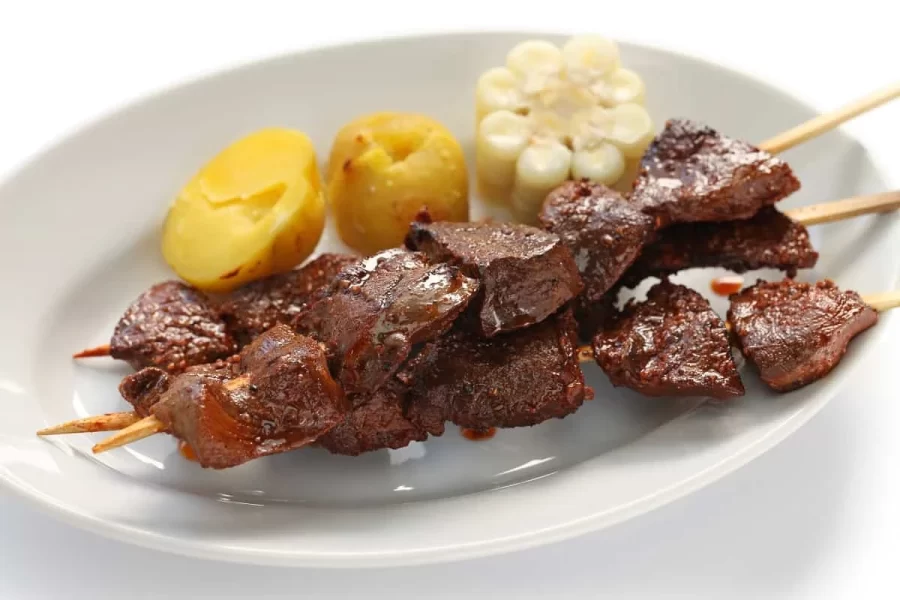
The anticuchos have an uncertain origin, although there have been studies that trace its beginnings to pre-Columbian times where alpaca and / or llama meat was used in improvised skewers, then with the arrival of the conquistadors new ingredients were added, such as beef, and also new spices to season the meat.
The anticucho continued to evolve until the time in which African slaves were brought, who were fed with the viscera of the cattle, at which time the anticucho as we know it today would begin to be threaded on a skewer.
The heart of the beef cut into strips is marinated in chicha, garlic, onions, salt, pepper, oregano and aji panca, for 24 hours, after this the meat is passed to the grill and with a brush made from corn husks is seasoned while the anticuchos are cooked on the grill.